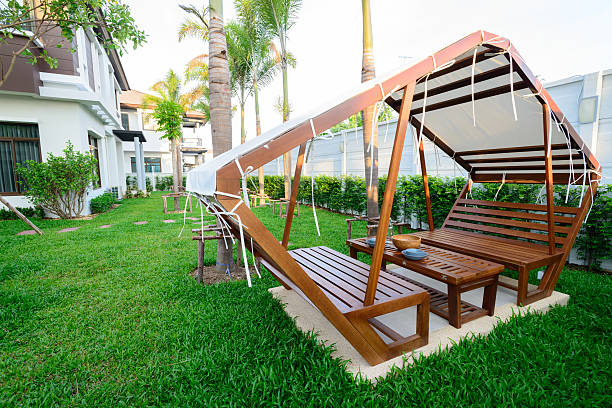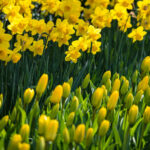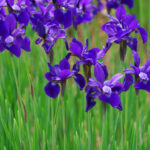The backyard is more than just a patch of land behind a house; it is a personal sanctuary that can be transformed into an oasis of relaxation, a place for recreation, or a productive garden. Over the years, backyards have evolved from simple outdoor spaces into integral parts of the home where families gather, friends socialize, and homeowners express their creativity. This article delves into the many facets of the backyard, exploring its history, design options, uses, and the ways it can enhance our lives.



1. History of the Backyard
The concept of the backyard, as we know it today, has evolved over centuries. In ancient times, open spaces behind homes were often utilitarian areas used for growing food, raising animals, or storing materials. During the Roman Empire, homes typically featured interior courtyards surrounded.
In medieval Europe, backyards were often communal spaces shared by multiple households, and they were primarily used for agriculture or as animal pens. However, during the 18th and 19th centuries, the idea of a private backyard for leisure began to take shape, particularly in Britain and the United States. As suburban development expanded in the 20th century, the backyard became a standard feature of single-family homes, transforming from a utilitar
Today, the backyard is often seen as an extension of the living space, designed to complement the home’s architecture and serve as a place for out
2. Designing Your Backyard
Designing a backyard requires careful consideration of the available space, personal preferences, and the intended use of the area. There are numerous design styles and elements to choose from, allowing homeowners to create a backyard that reflects their tastes and lifestyle.
a. Layout and Space Management
Before diving into specific design elements, it’s essential to plan the layout of the backyard. The size of the yard plays a significant role in determining what can be included. A well-designed layout should balance open space with functional areas such as seating, dining, play zones, and gardening.
- Zoning: Divide the backyard into zones based on activities. For example, a patio for dining, a lawn for playing, and a garden area for planting. Zoning ensures that each part of the backyard serves a specific purpose and creates a sense of organization.
- Pathways: Pathways made of stone, gravel, or wood chips can help direct movement through the backyard and create a sense of flow between different areas.
b. Landscaping
Landscaping is a key aspect of backyard design, and the choice of plants, trees, and shrubs can significantly impact the overall look and feel of the space.
- Lawns: A lush green lawn is a staple of many backyards. Lawns provide a soft, open space for children to play or for lounging in the sun. However, they require regular maintenance, including mowing, watering, and fertilizing.
- Trees and Shrubs: Trees can provide shade, privacy, and a sense of structure to the backyard. Depending on the climate, homeowners may choose deciduous trees for seasonal interest or evergreens for year-round greenery. Shrubs, on the other hand, are excellent for creating borders or natural fences.
- Flower Beds and Borders: Flower beds add color and texture to the backyard. They can be planted along fences, walkways, or patios to enhance the visual appeal. Perennials, annuals, and ornamental grasses are popular choices for flower beds.
c. Hardscaping
Hardscaping refers to the non-living elements of backyard design, such as patios, decks, and outdoor structures.
- Patios and Decks: Patios and decks provide a solid foundation for outdoor seating and dining areas. They can be made from materials like concrete, stone, wood, or composite decking. Patios tend to be ground-level, while decks are raised structures.
- Pergolas and Gazebos: Pergolas and gazebos are popular outdoor structures that offer shade and create a focal point in the backyard. Pergolas have an open roof design, often covered with climbing plants, while gazebos are freestanding structures with a solid roof, perfect for creating a cozy seating area.
- Fire Pits and Outdoor Kitchens: Fire pits add warmth and ambiance to a backyard, making it a perfect spot for gathering on cool evenings. Outdoor kitchens are becoming increasingly popular, allowing homeowners to cook and entertain guests outdoors.
3. Uses of the Backyard
The versatility of a backyard makes it an ideal space for a wide range of activities, from gardening and relaxation to socializing and recreation. The following are some of the most common uses of backyard spaces:
a. A Place for Relaxation
One of the primary functions of a backyard is to provide a peaceful retreat where people can relax and unwind. A well-designed backyard with comfortable seating, shade, and natural beauty can become a personal oasis.
- Seating Areas: Outdoor furniture such as lounge chairs, hammocks, or daybeds can create a cozy spot for relaxation. Adding a pergola or umbrella can provide much-needed shade during hot summer days.
- Water Features: The sound of running water from a fountain or small pond can create a calming atmosphere, perfect for meditation or reading.
b. Outdoor Entertaining
Backyards are perfect for hosting gatherings, whether it’s a family barbecue, a birthday party, or a casual get-together with friends.
- Outdoor Dining: A dining table set up on a patio or deck allows for outdoor meals during pleasant weather. Incorporating a barbecue grill or even an outdoor kitchen can take entertaining to the next level.
- Lighting: Outdoor lighting is essential for evening gatherings. String lights, lanterns, or solar-powered path lights can create a warm and inviting atmosphere after the sun sets.
c. Recreation and Play
For families with children, the backyard is an essential space for play and recreation. With the right setup, it can become a playground or sports field.
- Play Structures: Swings, slides, and climbing frames are popular additions to children’s play areas. These structures can be customized to fit the available space and the needs of the family.
- Sports and Games: Backyards can be used for various sports and games, including soccer, badminton, or volleyball. Installing a basketball hoop or a mini-golf course can add hours of entertainment for both kids and adults.
d. Gardening and Sustainability
For those with a green thumb, the backyard is an ideal space for gardening. Whether growing ornamental plants or cultivating a vegetable garden, gardening can be both a rewarding hobby and a way to contribute to sustainability.
- Vegetable Gardens: Growing your vegetables is not only satisfying but also promotes healthy eating and reduces reliance on store-bought produce. Raised beds, pots, or traditional garden plots can be used depending on the available space.
- Herb Gardens: Herb gardens are perfect for smaller backyards or even patios. Common herbs like basil, rosemary, and thyme can be grown in pots or directly in the ground, providing fresh ingredients for cooking.
- Composting: Many homeowners are incorporating composting into their backyard routine. Composting organic waste, such as food scraps and yard clippings, creates nutrient-rich soil for gardening and reduces waste.
4. Backyard Wildlife and Environmental Benefits
A backyard, when designed thoughtfully, can support local wildlife and contribute to environmental conservation. By planting native species and providing resources such as bird feeders and bee houses, homeowners can attract birds, butterflies, bees, and other pollinators.
- Bird Baths and Feeders: Installing bird feeders and baths can attract a variety of bird species to the backyard, enhancing its beauty and biodiversity.
- Pollinator Gardens: Pollinator-friendly plants like milkweed, lavender, and coneflowers can support bees, butterflies, and other important pollinators, helping to sustain the local ecosystem.
5. Seasonal Maintenance and Care
While a backyard can be a year-round sanctuary, it requires regular maintenance to remain functional and beautiful. Tasks such as mowing, weeding, pruning, and mulching should be part of the routine care.
- Spring: This is the time for planting new flowers, vegetables, and shrubs. Lawn care, such as aerating and fertilizing, is also important to encourage healthy growth.
- Summer: During the hot months, watering is crucial. Installing an irrigation system can help automate this process and reduce water waste.
- Fall: Fall is the time to clean up fallen leaves, prepare the garden for winter, and plant bulbs for spring blooms.
- Winter: Depending on the climate, winter may require covering plants to protect them from frost or trimming back dead foliage.
Conclusion
The backyard is a versatile and valuable part of any home, offering a space for relaxation, recreation, and creativity. Whether it’s a quiet retreat with lush gardens, a playground for children, or a place to host social gatherings, the backyard can enhance the quality of life for homeowners. With thoughtful design and proper maintenance, the backyard can become a personal oasis that reflects the homeowner’s style and meets their needs year-round.







